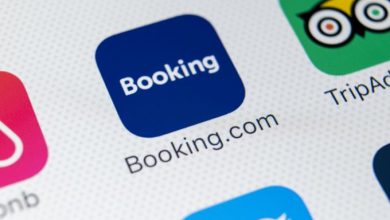
Trends in reservations inquiry call volumes
As a hotel reservations consultant and sales trainer, I’m often asked for my perspective on the current trends regarding the number of inquiry reservations call received vs. previous years.
Many hotel marketers seem to think this is a simple question and I suppose that on one level it should be. It certainly is possible to just ask a large sample of hoteliers for their number of calls received YTD vs. previous YTD and then average the percentage of change either way.
However, based on my experiences in consulting with a multitude of very different lodging operations , I would say that such a simple and true average of the number would be meaningless as a tool for benchmarking any specific operation. This is because trends are varying greatly based on many factors, the most obvious of which are geographical location, market segment such as resort vs. hotel, brand affiliation (such as branded, not branded, or soft branded) and the type of inventory (such as a traditional hotel with a few room categories easily explained at a website vs. a multi-use resort with a wide range of accommodations that might be confusing for online prospects).
Here are some less obvious factors that impact call trends:
- Did your hotel update its website, and if so, was the display (font size, location) of the phone number changed?
On a related note, as hotel websites have become more robust, there is more information than ever before available for guests prior to arrival and therefore there are far less “information only” calls being tallied. Similarly, guests can find answers to common questions online, so we no longer have many callers asking “Do you have a number for a car service?” “What is the cab fare from the airport?” or “Can I Get driving directions?”
- Did your pay-per-click ad campaign ads change how the phone number is displayed?
- Are there significant changes in city-wide conventions and/or events that might be causing there to be fewer dates when there is extraordinary demand? If so, this can significantly decrease call volume because when there is pressure in a market – and hotels are showing sold-out status online – many travellers pick up phones for the first time and begin desperately dialling. Just ask any of your agents how often they have this conversion: Agent: “For those dates we’re completely booked.” Caller: “Yeah, I know I saw that online but don’t you have any rooms? Not even a broom closet?”
- Are third party bookings being confirmed more quickly for the current period than in the past? For example, last year one KTN client literally had a stack of third party reservations made by wholesalers that came in via fax and was 1-2 days behind in sending confirmations. As a result, they had caller after calling asking to reconfirm and explaining their expected confirmation had not arrived. This year the client has moved to a seamless process and confirmations go out quickly, so therefore their call volume is way down as a result.
These are but a few of the many reasons which hotel marketers should be careful to look beyond the simple “average numbers” when benchmarking trends in call conversion.
So what is really happening in the industry? In looking at actual numbers from our diversity of KTN consulting clients I see a wide range of trends. Most clients are showing a slight decline in call volume from year to year, but I suspect that is mostly due the fall off in the “information only” and “reconfirm an online booking” calls mentioned above. A few clients are actually showing a slight increase in call volume, especially if they have taken my advice and posted their phone number more prominently on their website to encourage web surfing prospects to call as part of their strategy to recapture market share from OTA’s.
In the end though, the most valuable number for which to benchmark your hotel’s trends for call volume is against your own previous year’s numbers. Now if you are reading this article and thinking “gosh, we don’t even know how many inquiry calls we receive as compared to service calls or calls not relating to inquiries…” it might be time to consider a call and lead tracking system such as TrackPulse www.trackhs.com that is specific to the needs of the lodging industry.
That being said, even if call volume is trending down then the call conversion rates for voice inquiries should be trending up! This is because most hotels continue to update their websites, allowing prospects to have more insights than ever before in the history of lodging. Not only is there transparency of rates, but many hotels offer virtual tours, multiple images of each category and some even have 3D floor plans.
With all that information online, if today’s agents are properly trained to engage callers with investigative questions and to make personal connections, they definitely should be capturing even more calls even in the face of a slightly declining call volume.
Doug Kennedy is president of the Kennedy Training Network. Doug’s articles are originally published in www.HotelNewsNow.com” and AccomNews shares them with permission.
Doug is a leading provider of hotel sales, guest service, reservations, and front desk training programs and telephone mystery shopping services for the lodging and hospitality industry. He continues to be a fixture on the industry’s conference circuit for hotel companies, brands and associations. Since 1996, Doug’s monthly training articles have been published worldwide, making him one of the most widely read hospitality industry authorities.







